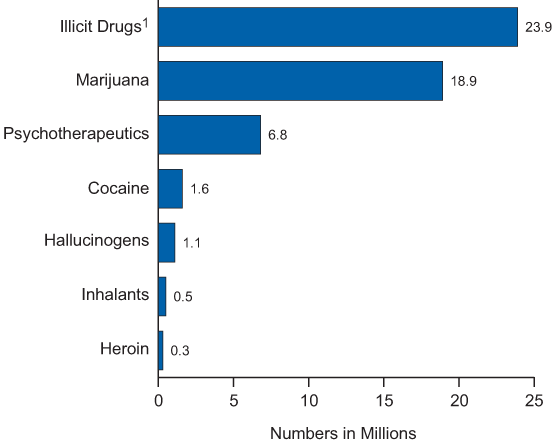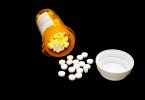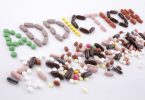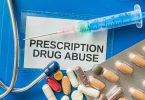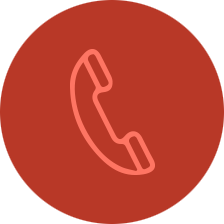Adolescents and young adults across the country exhibit extraordinary consistency in the approach to their first use of an illicit drug. Surveys focusing on drug use in the United States have been done for nearly 50 years and show similar trends across all generations.
Younger individuals who continued their drug use after their initial experience were likely to have moved through four stages, depending on their rate of use:
- Experimental stage: Caffeine (Coffee, Tea)
- Stage 1: Alcohol (Beer, Champagne)
- Stage 2: Hard alcohol and/or Tobacco (Whiskey, Vodka)
- Stage 3: Marijuana
- Stage 4: Hard Drugs (Cocaine, LSD, Heroin)
According to the 2012 National Survey of Drug Use and Health, 23.9 million Americans over the age of 11 were current users of illicit substances. Almost 19 million people were using Marijuana, 1.6 million were using Cocaine, 1.1 million people were using Hallucinogens and 0.3 million people were using Heroin.
This graph represents data gathered from the National Survey on Drug Use and Health in 2012. The horizontal axis shows numbers in millions. The drug categories on the vertical axis include Marijuana, Cocaine, Heroin, Hallucinogens, inhalants, Prescription Opioids, and psychotherapeutics, which embody sedatives, stimulants, and tranquilizers.
Inhalants include glue, aerosol sprays, Nitrous Oxide, spray paint, and cleaning solvents while MDMA, Mushrooms, Peyote, LSD, and others make up the category for Hallucinogens. This graph addresses some of the most commonly used substances, however, drug use in America can include up to several hundred substances.
The participants in this graph are considered current users as they reported using one or more substances within the prior month of the survey.
Most Common Substances Used Across the Nation
Americans cite several motivations for their substance use: to relax, celebrate, escape, enhance socializing, and often just to relieve curiosity. The drugs used are just as varied as their users’ motivations. The effects of many drugs used recreationally transition the user to a euphoric state of mind for a short time after ingestion. The varied side effects to misusing these substances are characterized by the class of drug they are.
Depressants Are Widely Used in the United States
Depressants suppress the central nervous system, which relaxes the muscles in the body and settles nerves. Examples of depressants are alcohol and marijuana; the most commonly used substances in the country. About 61 percent of people in America drink alcohol and 17 percent use Marijuana.
Kana Enomoto of the Substance Abuse and Mental Health Services said, “Among those with a substance use disorder, three out of four people (or about 15.7 million) had a substance use disorder related to alcohol.”
Opioid Use in America
Widely used as a pain relief medication, Opioids bind to the body’s opioid receptors on nerve cells all over the body. The medication produces an initial feeling of euphoria making the drug tempting to misuse.
Hydrocodone is the most used Opioid in the country with 2 percent of the population misusing this Schedule II drug. About 2 percent use Oxycodone, 0.37 percent use Morphine and 0.23 percent use Methadone; all are Schedule II substances.
Other commonly used Opioids are:
- Tramadol (Schedule IV): 77%
- Heroin (Schedule I): 0.39%
- Suboxone (Schedule III): 0.38%
- Oxymorphone (Schedule II): 0.18%
Rate of Stimulant Use in The United States
The most common stimulants used in the country are Amphetamines, also known as Adderall and Cocaine. Both are Schedule II drugs. When these substances are used recreationally, it is most often to increase one’s energy level.
Amphetamine use in the United States is reported to be about 2.8 percent of the country while Cocaine use is reporting at 2.19 percent. Other common stimulants include Meth and Ritalin, which are used by 0.68 percent of Americans and 0.61 percent, respectively.
The Use of Tranquilizers Across the Nation
Tranquilizers are similar to depressants in that they suppress the central nervous system, however, they have more of a sedation effect than depressants do. Common examples of the most used tranquilizers in the United States include Xanax, Clonazepam, Diazepam, and Soma. These are also referred to as psychotherapeutic medications.
They are used to treat anxiety, fear, agitation, and other mental disorders, however, 6.4 million Americans over the age of 11 were abusing them in 2015.
- Xanax: 2.05%
- Clonazepam: 0.6%
- Diazepam: 0.54%
- Soma: .21%
America’s Use of Hallucinogens
Just as the name suggests, users of Hallucinogens are drawn to the hallucinations and euphoria that occur shortly after ingesting the drug. MDMA is popular with adolescents and young adults who frequent the club scene. About 1.5% of Americans use MDMA.
LSD is another common choice among those who use Hallucinogens with about 1.07% of the American population using the Schedule I drug regularly. 0.2 percent of the country uses other Hallucinogens such as DMT while Ketamine use is reported by 0.17 percent.
How Many Americans Use Sedatives?
Sedatives are psychotherapeutic medications used to treat mental health conditions such as anxiety, insomnia, and seizures. Ambien and Lorazepam are the country’s most misused sedatives with 0.45 percent and 0.33 percent of the population using them, respectively.
Varied Treatment Approaches for Substance Use in America
With over 20 illicit drugs acknowledged here and countless more that individuals struggle with, varied treatment approaches have been developed for addiction to illicit drugs in the United States, which can make choosing the right rehab facility to seem overwhelming at first.
Some substances will require medically supervised detox while others may be able to progress through withdrawals at home and some addictions will call for inpatient rehab while others may be more suitable for outpatient strategies.
Contact us if you don’t know where to start. We’ll use your answers to our questions to guide you in the right direction.
Substance abuse treatment is invaluable as it can unmask other health conditions that may be contributing to the addiction. Appropriately treating these co-occurring disorders lowers the risk of relapse in early recovery along with a solid aftercare plan.
A healthy life change to be proud of is available to you. Give us a call today and we’ll prepare you to take the first step.

